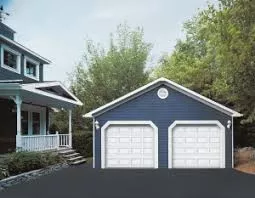
As your family gets bigger, you may start to notice that the original size of your home is no longer enough for everything. Obviously, everyone needs their own space, but this includes enough room for their possessions too. Things like extra appliances, equipment and even an additional vehicle may start to make things feel a bit claustrophobic.
A lot of times, this is when people try to use their original garage to handle this extra overflow. Eventually, though, you’ll find that this solution means it’s difficult to park your car and access it. Sometimes, it even ends with your vehicle getting dented after something falls or is knocked over.
This is why it makes sense to just opt for a second garage: additional vehicles and all kinds of appliances can fit with ease.
However, before you decide on something that represents such a significant investment, you have to think about some critical factors. Below, we’ll go over five very important things you need to think about before that extra garage space can ever become a reality.
Size
Even though most garage stalls are roughly the same size, it’s important to note that there’s actually a good deal of difference from one to the next. Furthermore, you have to think about how much room you’ll need.
For a lot of you, that extra garage stall is to fit that new minivan you need. For others, it’s a sedan and a riding lawnmower. Still others have skis to fit, fishing gear and Christmas decorations.
The point is that you need to consider how much space you’ll need and take your time doing it. What you don’t want is to finish this project, spend all that money and find out that you didn’t give yourself the space you needed this entire time.
Zoning Laws
Also, while we’re on the topic of size, remember that you’re not the only one who gets to have an opinion on this matter. Your HOA is going to be paying attention to this addition, so make sure your size needs have their approval before breaking ground.
Keep in mind that you’ll also need to do some of the heavy lifting. That is, your HOA will most likely expect you to present them with the required measurements for them to approve your plans. This could include leaving a mandatory amount of space between your home and your neighbor’s.
Road Access
Of course, given that your garage will most likely be housing a car, you’ll want to consider street access too. Your morning commute is going to be a lot harder if you can’t even get out of your garage without issue.
Be sure to give yourself enough room to comfortably leave your garage without backing up over the curb. That will eventually damage the curb and your tires in short order.
A two-car garage generally needs at least 20 ft from one side to the other. If you have trees that overhang, you may need a bit more. Hire a qualified contractor and they should be able to estimate this for you.
Proximity to Your Home
Depending on how big your yard is, you might be able to place your new garage right next to the one you already have. If not, though, you could create a freestanding version somewhere else on the property. It really just depends on your unique home.
If you do decide to build one right next to your home, check first to see if the exterior is going to present any problems. For example, will your garage get in the way of windows or doors? Will you have to shift any electrical outlets or pipes? Take an inventory of these and other important factors and, again, talk to your contractor about them.
Now, if you go with a freestanding garage, you’ll most likely be building it behind your home or at least a couple of feet from the edge of your house. Before doing this, consider how you’ll make use of the space between the two structures. What will become of the landscaping? Is there an easy pathway between your home and this new garage? Will trees and plants have to get moved before you build?
By planning ahead like this and taking into account the various challenges that each option poses, you don’t have to worry about an unwelcomed surprise popping up once the finished product is done.
Options for Your Garage Door
Finally, let’s talk about the actual door itself. After you have gone through the above four factors, it’s time to consider your options for the all-important door. Most of you will go with an automatic, but what about the aesthetics?
Make things easy on yourself by simply looking at your other garage and choosing a door that matches. This will mean going to that supplier and ordering another door that’s the exact make and model.
In some situations—like if you choose a freestanding garage and put it behind your home—you may decide to go with a different style. That’s fine, but it’s still important to think about how it will look with the rest of your home.
Otherwise, now might be a good time to replace the other garage door and choose a brand new version for both.
As long as you put yourself through this exercise, choosing a new garage for your home and having it installed should be a relatively stress-free process. Having the right contractor will go a long toward helping with the entire operation too.

Add new comment